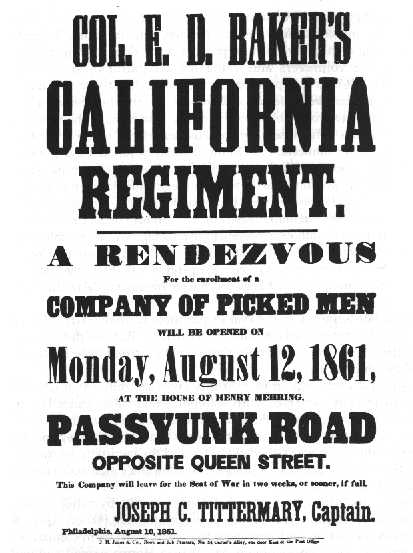Regiment lost during service 14 Officers and 147 Enlisted men killed and mortally wounded and 1 Officer and 98 Enlisted men by disease. Total 260.
 The story of the formation of this
command as the "1st California" Regiment has been outlined
in The California
Brigade. Soon
after the death of Col. Edward D. Baker at Ball's Bluff, a lamentable
affair in which the regiment lost heavily, the brigade was claimed
as a part of its quota by the State of Pennsylvania and was so
credited. The four commands were
The story of the formation of this
command as the "1st California" Regiment has been outlined
in The California
Brigade. Soon
after the death of Col. Edward D. Baker at Ball's Bluff, a lamentable
affair in which the regiment lost heavily, the brigade was claimed
as a part of its quota by the State of Pennsylvania and was so
credited. The four commands were